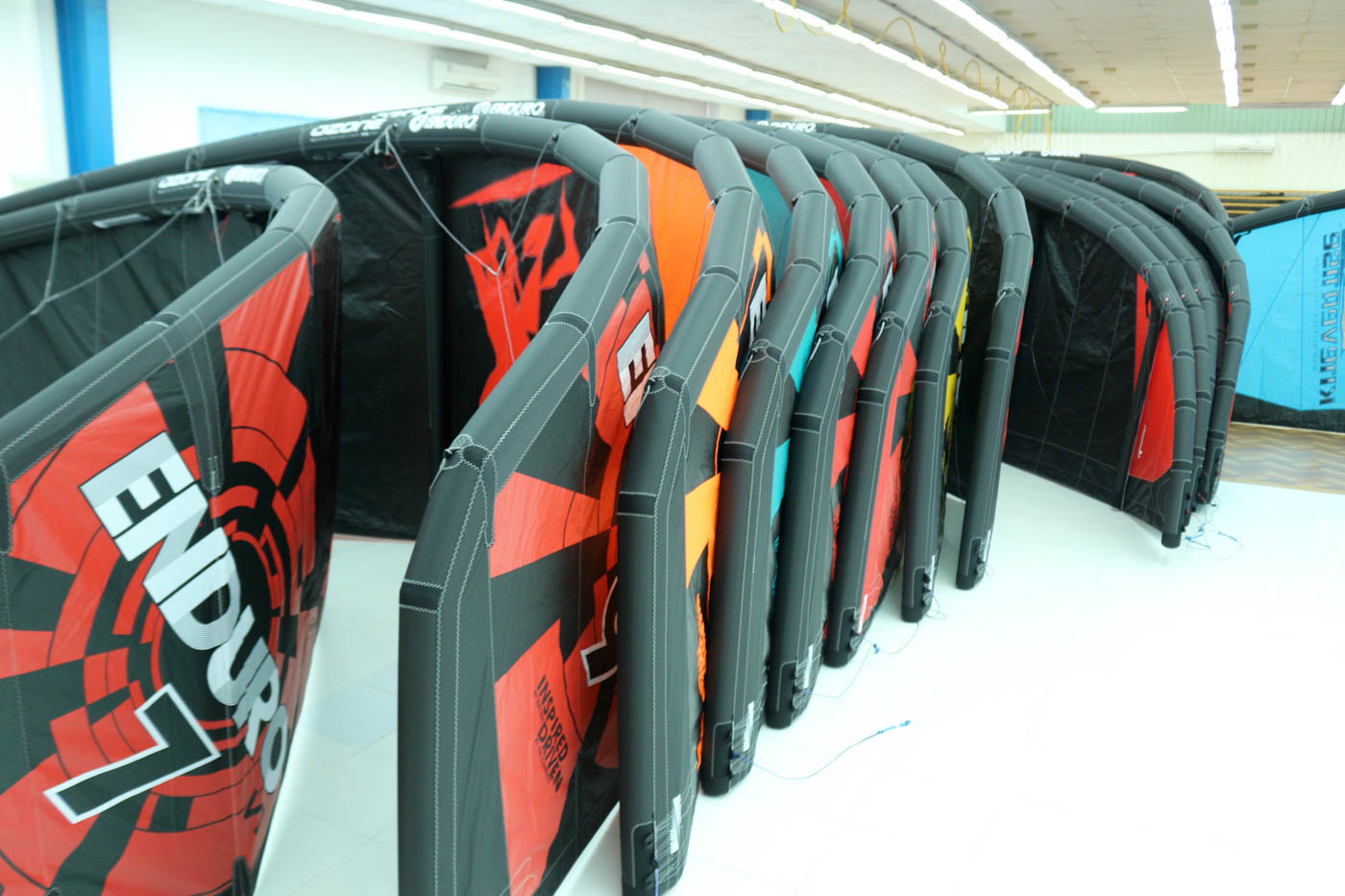Last December we were invited out to Vietnam to spend time with the Ozone design team and get a tour of the factory. Parapex – as the factory is called – is a huge part of the success Ozone have had in the kite industry, and we were there in time to celebrate its 10 year anniversary. This was huge! The factory is a lot bigger than many may imagine – building kites and paragliders is not an automated process, almost all of the work is done by hand. There is a lot of assembly, and testing to be done as well. Quality control and inspecting the work constantly is a huge part of the factory too – helping to minimise the chance of any type of malfunction. To get all this done – the factory now employs around 1200 people – making nothing but Ozone products.
Our first visit to the factory was in the afternoon for the party. Every employee was invited. There was food and drink and a stage with an MC hosting the night. This was all for the employees, not us, so it was pretty much all in Vietnamese. Everyone seemed pretty excited and for good reason – the raffle prizes were great! The top prize was a moped!
The next morning we were back at the factory for the real visit – and what we were most excited about – the factory tour. We were very lucky and David, who first set up the factory and spent many years in Vietnam getting all the systems and processes in place was there to give us the tour as well as the factory manager. First things first – shoes off. Cleanliness inside the factory is important. The buildings where kites and wings are produced are all white inside and you can tell they are spotless. Everywhere is air conditioned and ventilated.
Materials
Where material arrives at the factory it is rigorously inspected and tested. Every roll of fabric is passed over a light and inspected for imperfections which are marked. This way when panels are being cut, they can arrange the templates around the imperfections to use the good fabric and never risk these ending up on a kite. A local University is also sent a sample of each batch of fabric for further testing. Once it has passed inspection it is then stored in a temperature and humidity controlled environment. Each bar is also load tested before being passed on for assembly.
Water Kites
In the water kite production area we saw how the panels are cut using metal templates arranged on the fabric to make the most efficient use of material to minimise waste, but also avoiding any imperfections. Next up printing – this is done by a local business in a neighbouring unit. Once the printed panels have returned, they are inspected again and then the assembly work begins. At every step of the process the work is continually inspected. Each small team has a dedicated quality control inspector who has to review the work.
All bladders are made on site, then left inflated for at least 12 hours. Next they are fitted into the finished kites, then pumped up and left for 24 hours. Any kite that does not hold pressure will have the bladders removed, checked, refitted then be left for a further 24 hours.
Foil Kites
The foil kite production teams are the same teams who build the paragliders. The materials, construction methods and processes are very similar. The stitching is more complicated than the water kites as there is the whole internal structure. The sewing teams have handbooks with detailed guides on every element of the process which they can reference when needed.
A seperate team will create the bridle. This involves a lot of measuring, cutting and very precise splicing. Once the wing is complete, the bridle is attached and it is suspended, inflated and thoroughly checked. The main things to look for are ensuring the bridle is fitted correctly and then looking for any pinching or uneven parts in the wing. Every single foil kite goes through this process.
Bars and Accessories
A seperate factory unit does the bars, lines and accessories. All of our clothing, bags and harnesses are made on site. There are examples of each item available for staff to look at and check to make sure they have assembled everything correctly.
We were thorougly impressed with the attention to detail and the processes involved. It was amazing to see the whole process first hand after knowing it from a distance and working with our order system for years. It also gives a new appreciation for the amount of work involved in assembling a kite. This truly is a huge asset to Ozone!






















too many times customers think manufacturing is far simpler!
It is easy to understand why! We hear so much about automation and technology and mass production. This is truly skilled work though!